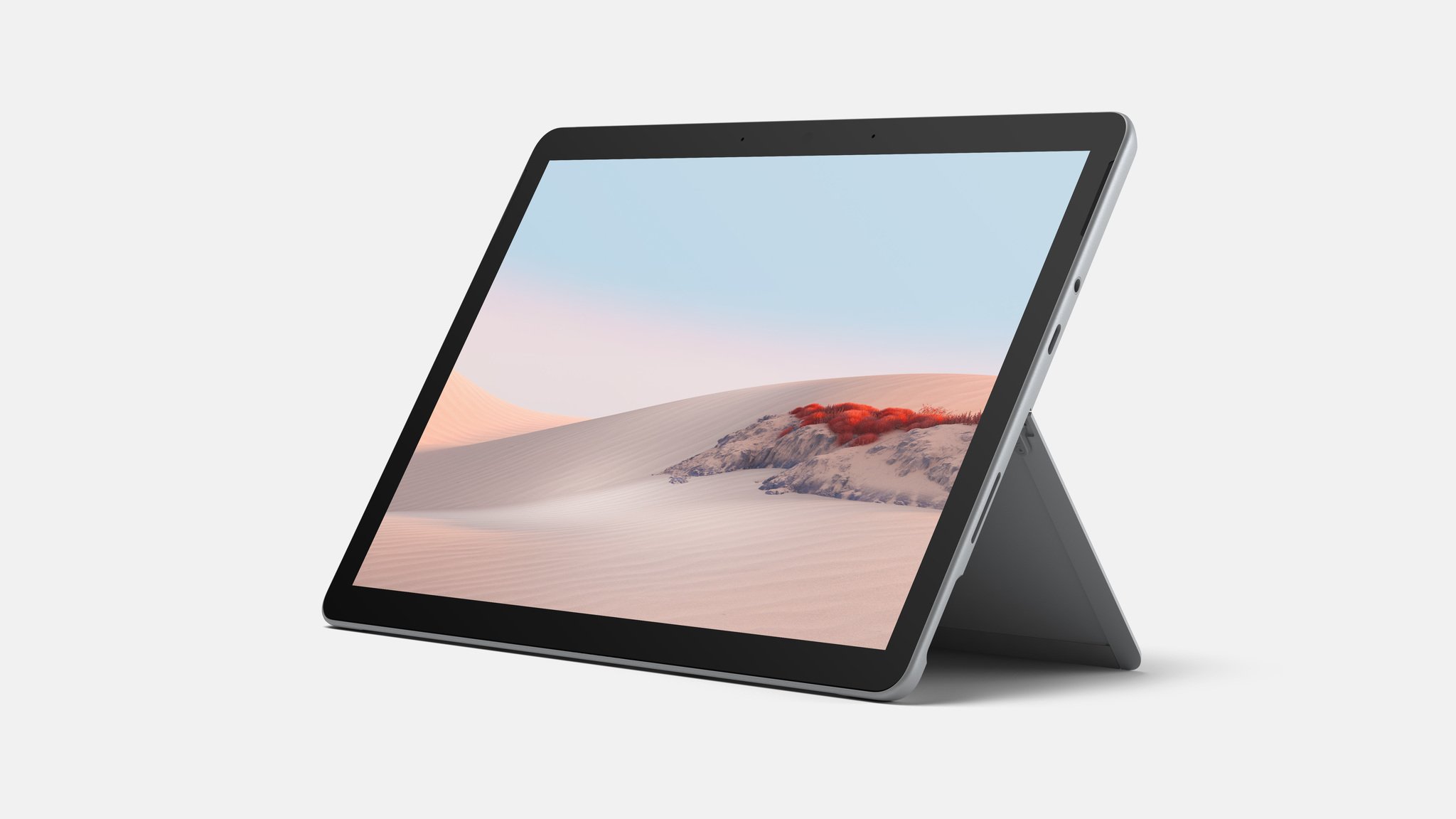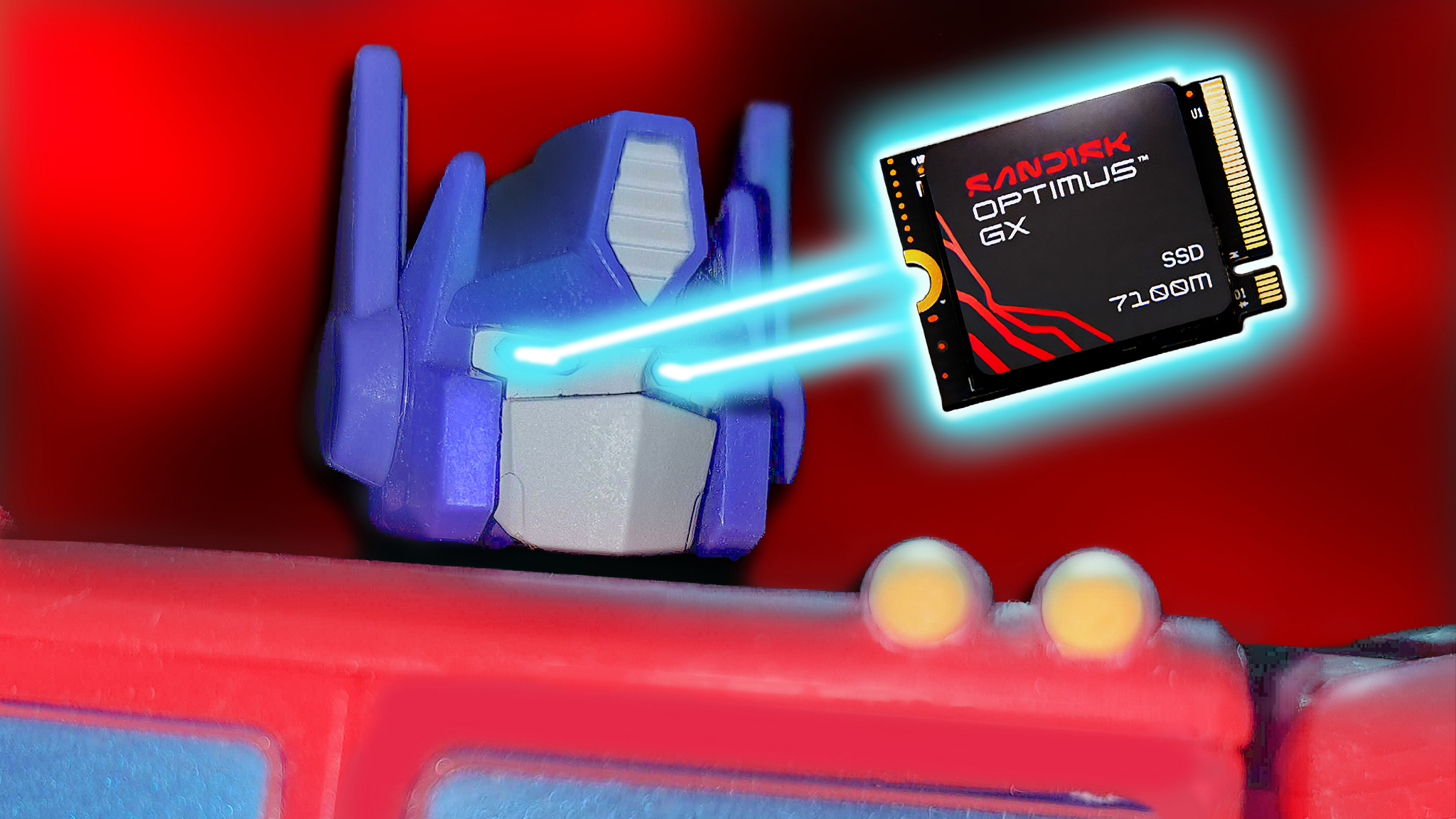Surface Go 2 hands-on impressions: Core m3 smokes the Pentium in early benchmarks
The Core m3 sure brings a boost in performance, plus other smaller improvements to the Surface Go 2.
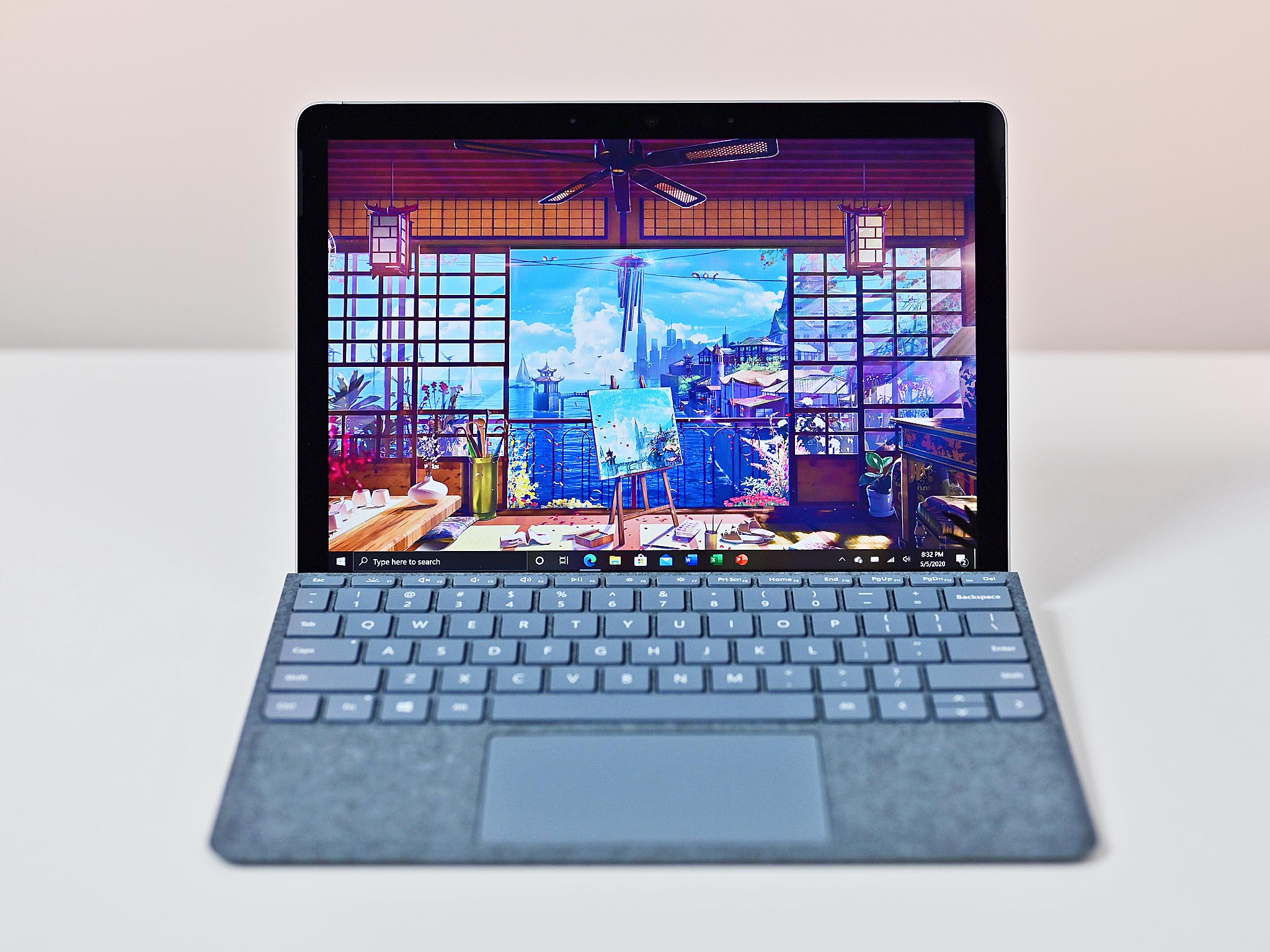
The Surface Go 2 is now official, and Microsoft will begin shipping the device on May 12th in more than 20 different markets. Now with a more prominent display, smaller bezels, and new processor options, the Surface Go 2 looks to be a significant bump over its predecessor, so long as you shell out the extra cash.
I have had the Surface Go 2 for nearly the last 24 hours. While it is way too early for battery life estimates, I have been able to run some synthetic benchmarks to add some perspective to that "new" Intel Core m3-8100Y processor.
Here are five things I have noticed with the new Surface Go 2, so far.
Intel Core m3 makes a big difference

Compared to the Pentium processor in both the older 4415Y and newer 4425Y models, the Core m3-8100Y delivers a significant step up in performance. The Go 2 now feels much more like a regular laptop.
The Core m3 runs at 5 watts versus the 6 watts of the Pentium chip with a lower base frequency (1.1 GHz, vs. 1.7 GHz, respectively). But the Pentium is effectively fixed at 1.7Ghz, whereas the Core m3 can use turbo to 3.4GHz. That's the big difference.
The Intel UHD 615 GPU is also tweaked by 50MHz, which adds a little boost, too.
The early benchmarks speak for themselves when compared to the original Surface Go:
All the latest news, reviews, and guides for Windows and Xbox diehards.
Geekbench 5
Geekbench 5.0 (CPU) (Higher is better)
| Device | CPU | Single core | Multi core |
|---|---|---|---|
| Surface Go 2 | Core m3 | 847 | 1,609 |
| Surface Go | Pentium | 376 | 947 |
| Surface Pro X | SQ1 | 725 | 2,819 |
| Surface Laptop 3 13.5 | i5-1035G7 | 1,177 | 4,413 |
| Surface Laptop 2 | i5-8250U | 909 | 3,372 |
| Surface Pro 7 | i5-1035G4 | 1,191 | 4,441 |
| Surface Pro 6 | i7-8650U | 1,113 | 3,519 |
| Surface Pro 6 | i5-8250U | 904 | 3,440 |
Geekbench 4
Geekbench 4.0 (CPU) (Higher is better)
| Device | CPU | Single core | Multi core |
|---|---|---|---|
| Surface Go 2 | Core m3 | 4,028 | 6,804 |
| Surface Go | Pentium | 2,078 | 3,934 |
| Surface 3 | Atom x7 | 1,078 | 2,777 |
| Surface Pro X (ARM) | SQ1 | 3,505 | 11,727 |
| Surface Pro X (x86) | SQ1 | 2,182 | 6,822 |
| Samsung Galaxy Book2 (ARM) | SD850 | 2,262 | 7,405 |
| Samsung Galaxy Book2 (x86) | SD850 | 1,345 | 4,164 |
| HP Envy x2 (ARM) | SD835 | 2,111 | 6,314 |
| Surface Laptop 3 13.5 | i5-1035G7 | 5,265 | 17,345 |
| Surface Laptop 2 | i5-8250U | 4,203 | 13,233 |
| Surface Laptop | i5-7200U | 3,725 | 7,523 |
| Surface Pro 7 | i5-1035G4 | 5,245 | 17,350 |
| Surface Pro 6 | i7-8650U | 5,037 | 13,864 |
| Surface Pro 6 | i5-8250U | 4,287 | 14,031 |
| Surface Pro 5 | i7-7660U | 4,513 | 9,346 |
| Surface Pro 5 | i5-7300U | 4,302 | 8,482 |
| Surface Pro 4 | i5-6300U | 3,319 | 6,950 |
GPU
Geekbench 4.0 OpenCL (higher is better)
| Laptop | GPU | Score |
|---|---|---|
| Surface Go 2 | UHD 615 | 19,488 |
| Surface Go | HD 615 | 16,490 |
| Surface 3 | Intel HD | 8,055 |
| Surface Pro 4 (m3) | HD 515 | 14,650 |
| Surface Pro 4 | HD 520 | 17,395 |
| Surface Book | HD 520 | 18,197 |
| Surface Laptop i5 | HD 620 | 19,256 |
| Surface Pro 2017 | HD6 20 | 20,688 |
| Surface Pro 2017 | Iris 640 | 30,678 |
| Surface Laptop i7 | Iris 640 | 31,010 |
3DMark
PCMark 10 (higher is better)
| Laptop | Score |
|---|---|
| Surface Go 2 | 2,554 |
| Surface Go | 1,808 |
SSD
CrystalDiskMark (Higher is better)
| Device | Read | Write |
|---|---|---|
| Surface Go 2 (SSD) | 1,630 MB/s | 373 MB/s |
| Surface Go (SSD) | 1,185 MB/s | 133 MB/s |
| Surface Go (eMMC) | 260 MB/s | 145 MB/s |
| Surface 3 | 149 MB/s | 33 MB/s |
| Surface Pro X | 2,023 MB/s | 832 MB/s |
| Samsung Galaxy Book2 | 722 MB/s | 205 MB/s |
| HP Envy x2 | 513 MB/s | 197 MB/s |
| Surface Laptop 3 13.5 | 2,338 MB/s | 1,583 MB/s |
| Surface Laptop 3 15 | 2,028 MB/s | 806 MB/s |
| Surface Laptop 2 | 1,509 MB/s | 811 MB/s |
| Surface Laptop | 486 MB/s | 244 MB/s |
| Surface Pro 7 | 2,040 MB/s | 809 MB/s |
| Surface Pro 6 | 1,632 MB/s | 814 MB/s |
| Surface Pro 5 | 847MB/s | 801 MB/s |
| Surface Book | 1,018 MB/s | 967 MB/s |
| Dell XPS 13 2-in-1 7390 | 2,400 MB/s | 1,228 MB/s |
.
The heat is also well contained despite the higher CPU clockspeed. The Surface Go 2 with Core m3 is a fanless system, like before, but it doesn't get scorching either in my early tests.
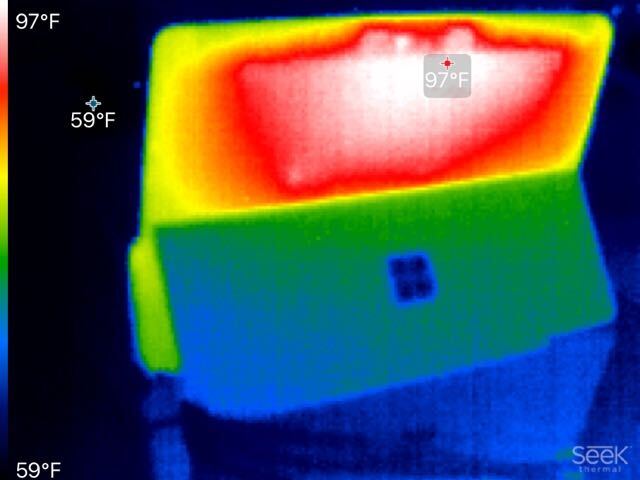

The back of the Go 2 gets warm to around 101 degrees Fahrenheit (38 degrees Celsius), which is well below what most laptops get on their top decks. You can see in my thermal image just how the heat is dispersed throughout the chassis.
Of course, the Intel Core m3-8100Y retails for roughly $120 more than the Pentium chip, and that is reflected in the slightly higher price point of the Surface Go 2. That said, the performance boost – when combined with the faster SSD in the Go 2 – makes a big difference in the user experience.
This is an excellent display
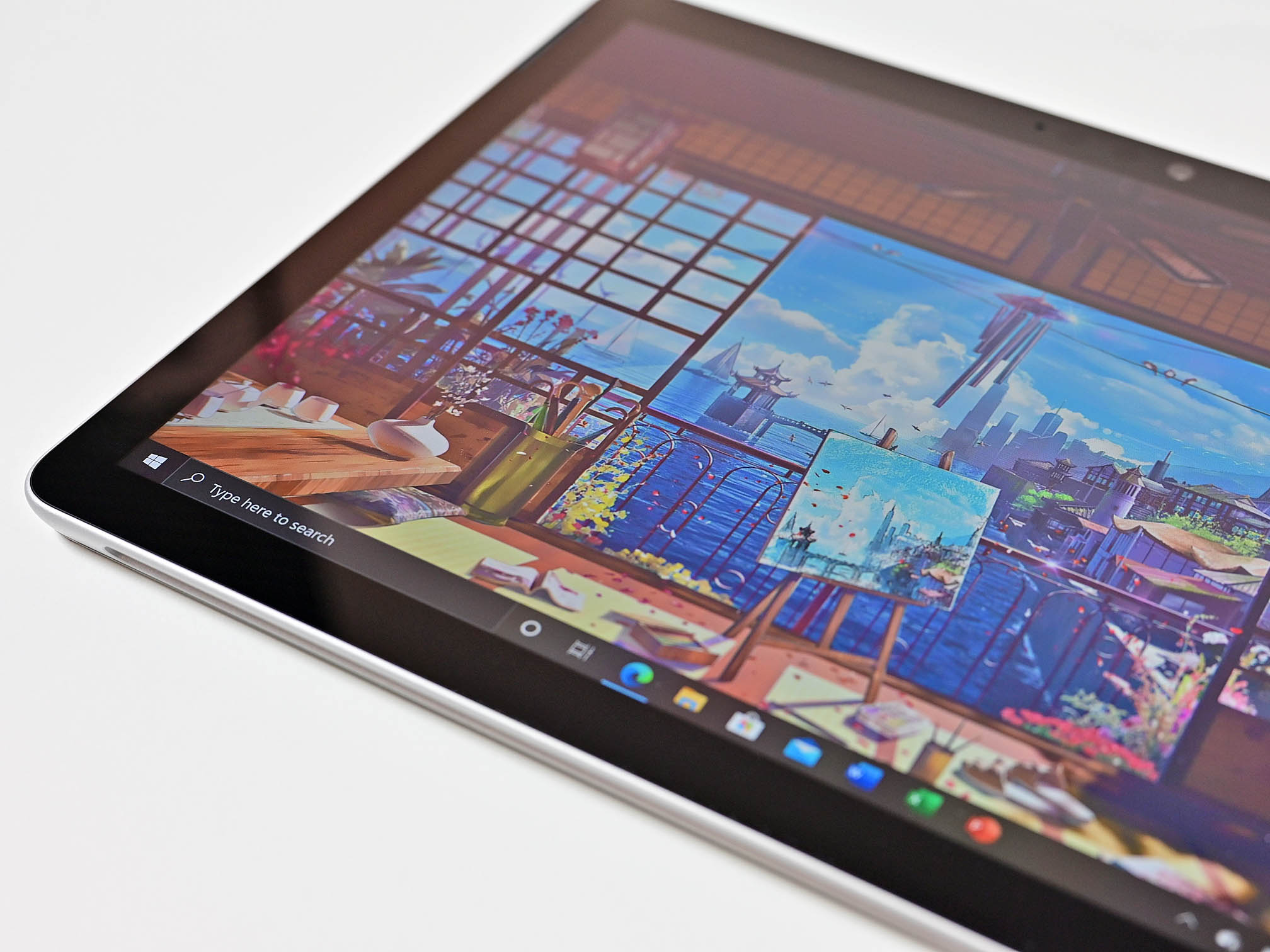
Even though the Surface Go 2 can creep up in price, that $399 model is still impressive, especially the screen for this class of device.
Sure, it's still glossier than I would prefer, but it is pulling in 99 percent Adobe sRGB with nearly 400 nits of brightness with outstanding viewing angles.
That extra half-inch of screen realestate is undoubtedly much nicer too. It's still a small device, but it's a bit better now.
The thinner bezels now look ordinary. They're not crazy Dell-InfinityEdge-thin, but there's a reason for that. The Surface keyboard now comes right up to the bottom of the display. Were the bezels to be any thinner, either the keyboard would overlap onto the screen (not good), or Microsoft would have to have a larger bezel just on the bottom of the Surface Go 2, which would ruin the symmetry and make it look goofy.
Instant On, magnets, LTE, and more
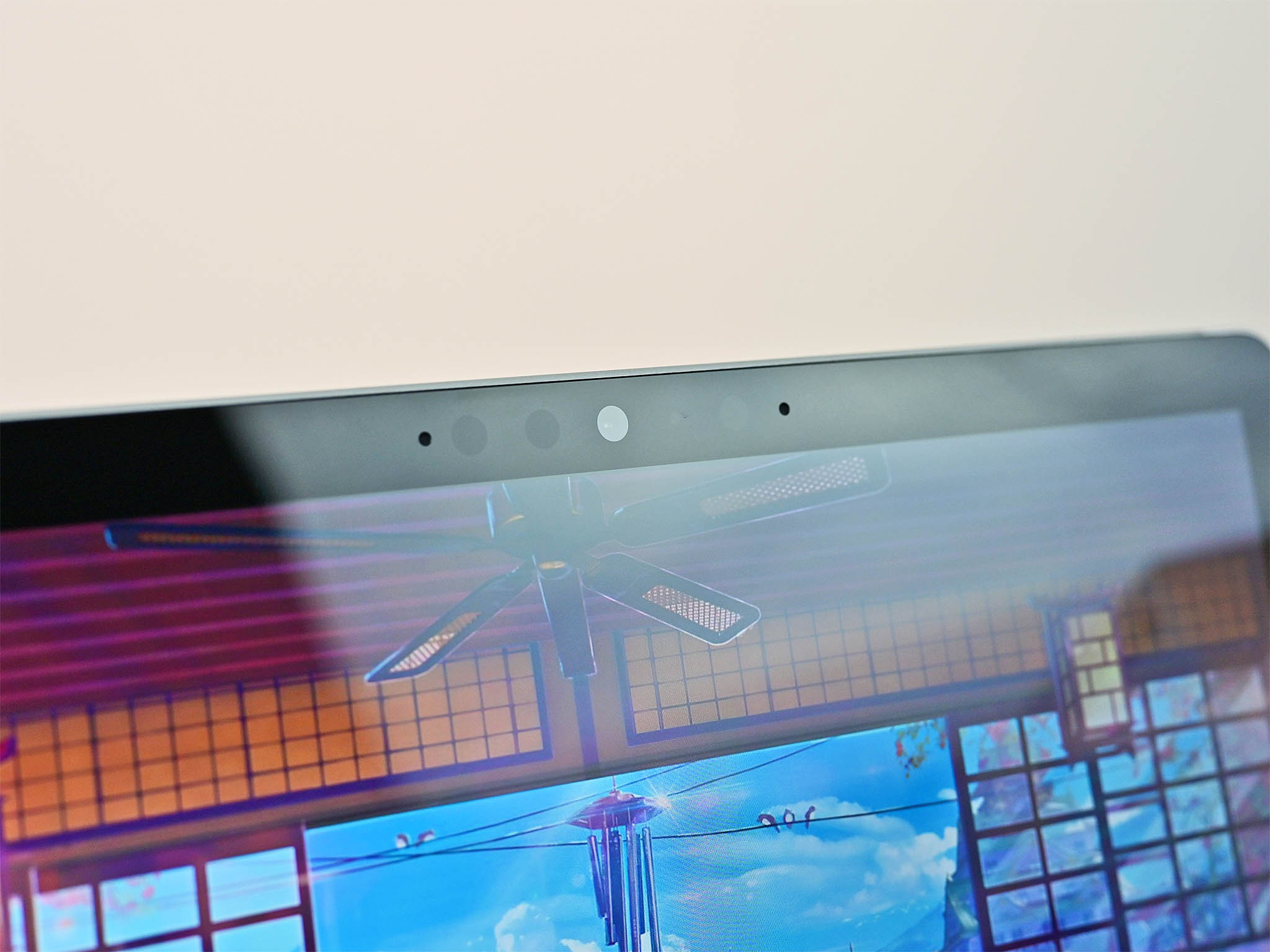
Some smaller changes with the Surface Go 2 get less attention, but here are a few.
There is now a better implementation of Microsoft's Instant-On technology that came to the Surface Laptop 3 (Intel versions) and Surface Pro 7 last year. Flipping the keyboard open now turns on the Surface Go 2 much faster without it going into hibernation as quickly. When combined with the zippy Windows Hello, it's very fluid.
Like Surface Pro X there are now small magnets at the top of the display that helps keep the keyboard from flopping around.
Microsoft is hyping the camera and microphones in its new sizzler video for the Go 2. It is right to do so as Surfaces have always had the best web cameras around, and this 1080P one is great. It's the same camera as the Surface Go, but now it has two Studio Microphones flanking it instead of one, making it even better for that online digital meeting life we're all doing in 2020. Compared to every premium Ultrabook on the market, the Go 2 smokes them.
The model I am testing also has 4G LTE, and Wi-Fi 6 is now standard. So far, the wireless abilities have been excellent. It is an unlocked LTE device, as expected. I'm using it with Verizon and have tried Sprint with no issue. There is also a secondary eSIM option letting you switch between a physical and electronic SIM on the fly.
Surface Go 2: More to come

As usual, I'll be spending the next few days with the Surface Go 2 before my review to get a better idea of battery life and performance.
So far, out-of-the-box impressions are great. The 128GB SSD has about 81GB of free space after the initial setup. The Surface Go 2 ships with Windows 10 version 1909 (build 18363.15) in S Mode. Switching out of S-Mode is very easy with a simple button click in the Microsoft Store – you don't even have to reboot. The new Microsoft Edge came pre-installed to and pinned to the taskbar along with a few Office applications.
The Surface Go 2 arrives on May 12 with a starting price of $399. The model I'm testing with LTE, and the Core m3 tops out at $729. You can get all the pricing and full specifications in our announcement post here.
Have any questions? Leave them in comments, and I'll answer them for the review.

Daniel Rubino is the Editor-in-chief of Windows Central. He is also the head reviewer, podcast co-host, and analyst. He has been covering Microsoft since 2007 when this site was called WMExperts (and later Windows Phone Central). His interests include Windows, laptops, next-gen computing, and wearable tech. He has reviewed laptops for over 10 years and is particularly fond of 2-in-1 convertibles, Arm64 processors, new form factors, and thin-and-light PCs. Before all this tech stuff, he worked on a Ph.D. in linguistics, performed polysomnographs in NYC, and was a motion-picture operator for 17 years.
